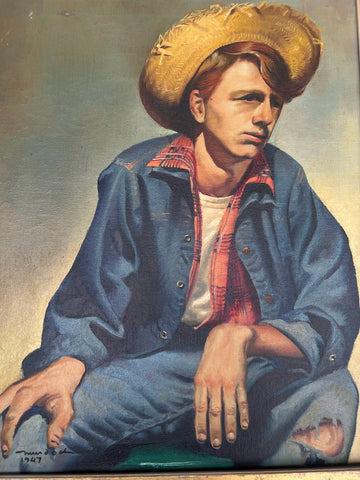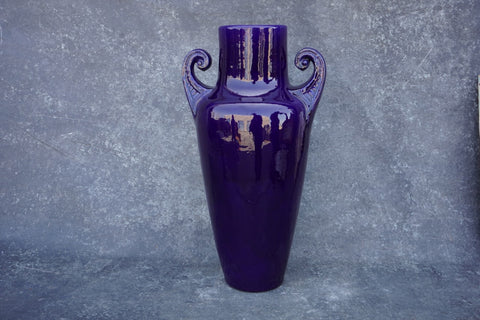Wallace Nutting Original Hand-Tinted Photograph “Summer Wind”
Wallace Nutting (1861-1941) was a central figure in the Colonial Revival movement whose work both fascinates and fuels controversy in the museum field. A former Congregational minister, he changed careers to become an artist-photographer, house restorer, collector of antiques, antiquarian, noted author, and furniture manufacturer. His influence was enormous, similar to that of Martha Stewart today, in promoting the then emerging interest in gracious Colonial homes tastefully decorated with American antiques.
Wallace Nutting resigned his ministry in 1904 at age forty-three to become a professional “art” photographer. His first pictures were mostly of birch trees and apple blossoms taken in New England. He used platinum prints that were hand-colored with water colors. As his business expanded, girl colorists were employed to work in his various studios. They did each print individually based upon his strict instructions, one color at a time, until finished. His interior views, which he called “personals” or “colonials,” were staged in early houses, using antique furniture as props and employing models dressed in colonial clothing. Typically, one or more braided rugs covered the floor, usually made by Mariet Nutting, who offered them for sale. Mrs. Nutting also appears frequently as a model in these scenes. Nutting’s mass-produced photographic views of idyllic streams, rugged coastlines, historic houses, and pretty maidens in tasteful colonial interiors appealed to a broad middle-class audience. The hand-tinted images were signed, matted, and framed and could be had for as little as $1.50 in 1915. Nutting claimed in 1936 to have produced ten million individual views.
“Summer Wind”, above, measures 34″ high x 29 1/2″ wide as currently framed; image itself is 24″ high x 19″ wide.















